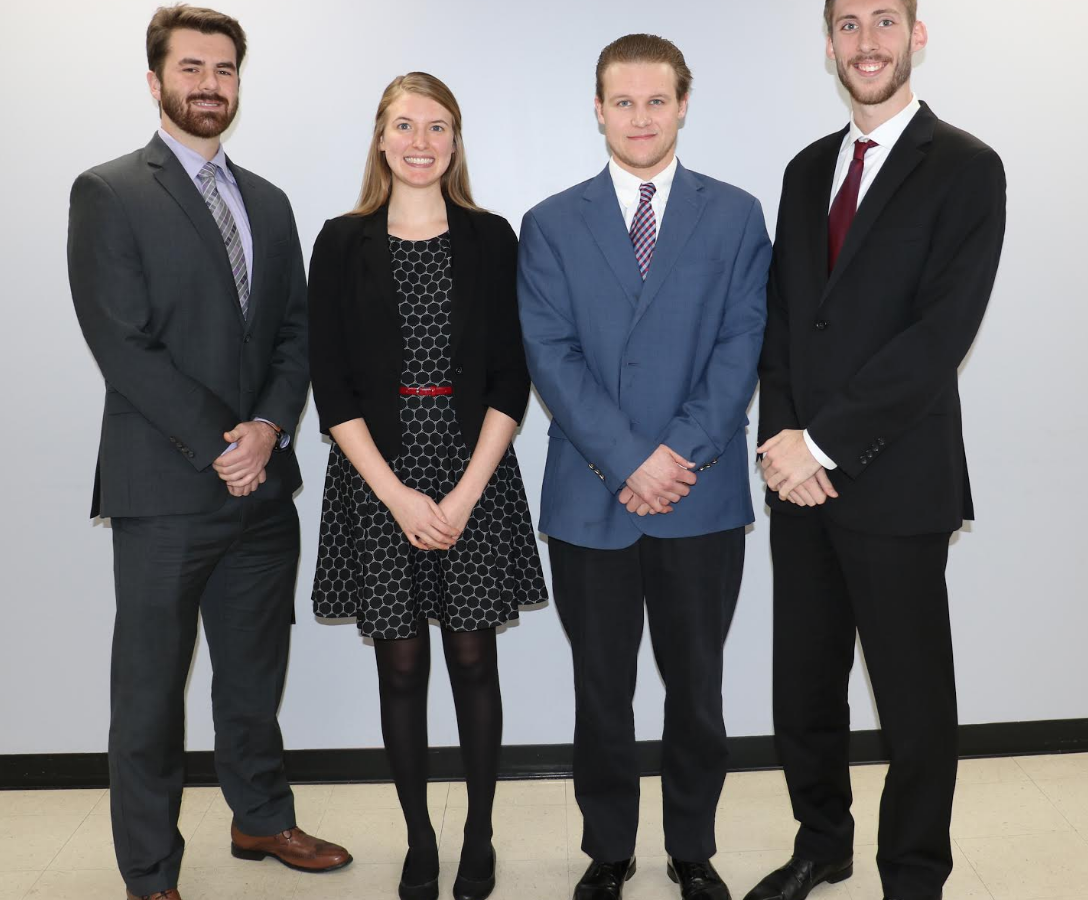Each year student teams travel to the American Society of Agricultural and Biological Engineers Annual International to compete in one of two design competitions. The Gunlogson Environmental Student Design competition and the AGCO Student Design competition.
The purpose of the Gunlogson competition is to encourage undergraduate students to participate in the design of a relevant engineering project and to provide an arena of professional competition for environmentally and biologically related design projects.
This year seniors Kaylee Saaranen, Charles Robertson, Tyler Pallen, and Jonathan Lewis represented NC State in the Gunlogson Competition and placed second nationally at the ASABE virtual Annual International Meeting.
Their project, Sediment Load Analysis and Stream Stabilization for Valley Lake, was advised by extension associate professor and extension specialist Barbara Doll along with significant guidance from senior design advisors professors Mari Chinn and Mike Boyette.
The Valley Lake community had a problem with their lake filling with sediment,” notes Jonathan Lewis. “Our job was to stabilize the banks of the stream by realigning the channel, designing a new cross section, and repairing the riffles and pools. We also designed a sedimentation basin for any soil that did erode.”

Typically, stream restoration projects lead to a deep, channelized stream becoming more meandered. Due to space constraints, the team had to do the opposite and design a straighter stream.
This became a problem when considering the elevation change from the start to the lake. A meandering stream has more length to counteract the elevation drop, but our stream could not do that,” Lewis adds. “Therefore, we implemented a design which is similar to how Rocky Branch is designed near Carmichael Gym. That is, we used drop structures to decrease the elevation. Water flows over boulders into pools, where the energy gets dissipated. That was just one of the challenges.”
Tyler Pallen agrees.
“The limited area we had to work with was one of our largest challenges.” he notes. “We had to be creative in how our design could fit in the area we had. The budget was also a consideration. Our client has a limited budget, so every decision we made was a balance between performance and cost.”
Much of the data collection work was completed in the fall semester so much of the spring semester was made up of AutCAD. Thankfully, much of the project was completed through AutoCAD. In this case it was a plus when school shutdowns did not effect the team’s project progress.

